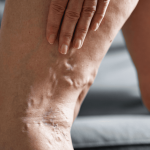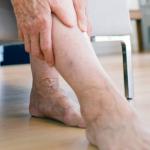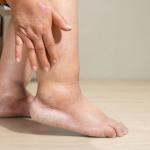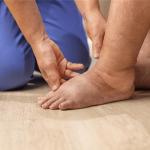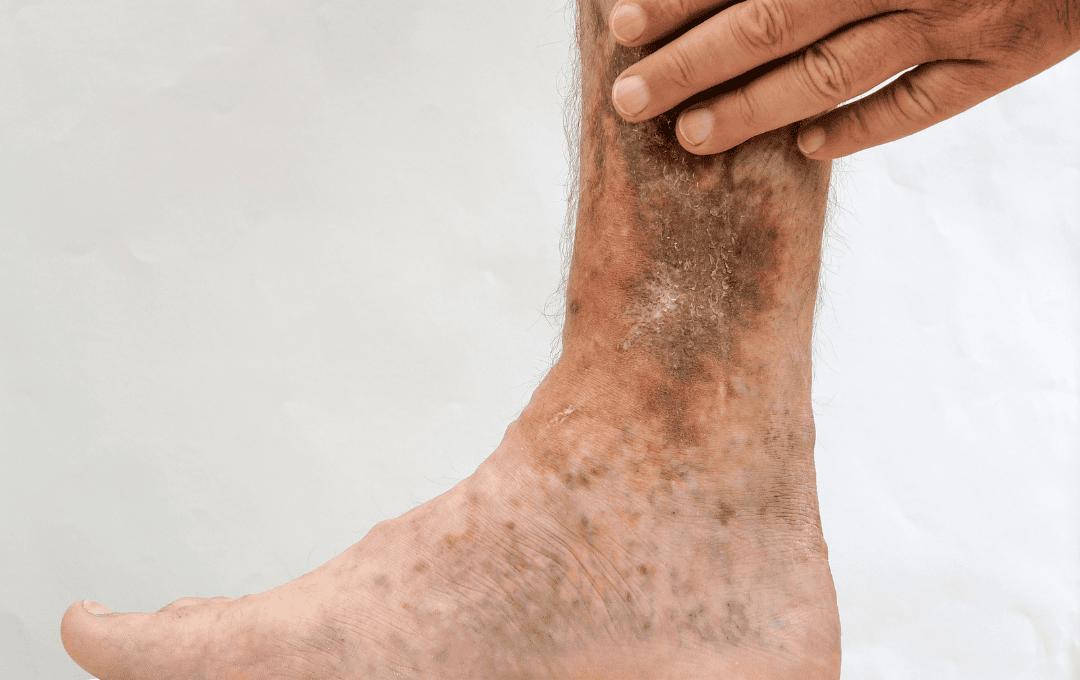
Noticing brown spots or discoloration on your legs can be concerning — especially when they appear gradually and don’t fade. Many people assume it’s just aging or sun damage, but persistent brown patches on the lower legs or ankles often signal something deeper: a circulation or vein problem.
At USA Vein Clinics, our specialists often see patients who’ve lived with these spots for years, unaware they’re a sign of chronic venous insufficiency (CVI) — a common but treatable vein condition.
The Circulatory Cause Behind Leg Discoloration
Healthy veins carry blood from your legs back to your heart through one-way valves. When those valves weaken or fail, blood can pool in the legs. Over time, the pressure from this pooling stretches the vein walls and allows red blood cells to leak into surrounding tissues.
As those cells break down, iron pigments (hemosiderin) are left behind under the skin, creating visible brown or rust-colored spots — often near the ankles or calves.
This process is called venous stasis dermatitis or hemosiderin staining, and it’s one of the early visible signs of vein disease.
Common Vein-Related Causes of Brown Spots
1. Chronic Venous Insufficiency (CVI)
CVI is the root cause of most vein-related leg discoloration.
What happens:
-
Faulty valves in the leg veins cause blood to pool
-
Pressure builds, leading to inflammation and fluid leakage
-
Red blood cells break down under the skin, leaving behind brown pigmentation
Symptoms of CVI may include:
-
Brown, reddish, or purplish discoloration (especially near ankles)
-
Leg swelling that worsens through the day
-
Itching or dry, flaky skin
-
Heaviness or burning in the legs
-
Visible varicose or spider veins
Without treatment, CVI can progress to skin thickening, eczema-like irritation, or even venous ulcers (open sores).
2. Varicose Veins
Varicose veins aren’t just a cosmetic issue — they’re a major contributor to poor circulation and skin damage.
As vein walls weaken, they can cause pressure changes under the skin that lead to discoloration, inflammation, and eventually brown patches.
You may notice these spots forming around visible varicose veins, especially after long days of standing or sitting.
3. Venous Stasis Dermatitis (Venous Eczema)
Chronic fluid buildup from vein disease irritates the skin, leading to itching, redness, flaking, and dark patches.
The skin may become shiny, leathery, or scaly over time.
This condition is common in people who’ve had untreated vein issues for years.
4. Old Injuries or Bruising That Doesn’t Heal Normally
In some cases, brown spots can start as bruises or trauma that don’t heal properly because of poor circulation. If your veins aren’t moving blood efficiently, even small injuries may take longer to fade and can leave behind permanent pigmentation.
Are Brown Spots Dangerous?
While brown spots themselves are not dangerous, they are a warning sign that your veins may be struggling. Ignoring them can allow vein disease to progress, increasing the risk of:
-
Skin ulcers or sores that don’t heal
-
Infections due to skin breakdown
-
Pain, swelling, or cramping that worsens over time
Early treatment can help reverse discoloration and prevent future complications.
Treatment Options at USA Vein Clinics
At USA Vein Clinics, our board-certified vein specialists use advanced, minimally invasive treatments to address the root cause — poor circulation — and help restore healthy, even-toned skin.
Treatment options include:
-
Endovenous Laser Therapy (EVLT) – Uses gentle laser energy to close diseased veins and redirect blood flow.
-
Ultrasound-Guided Sclerotherapy – Injects a safe solution into small or medium veins to close them and reduce discoloration.
-
Varithena® or Radiofrequency Ablation (RFA) – Modern, non-surgical options that relieve pressure, reduce swelling, and help fade brown spots over time.
All treatments are performed in-office, typically take under an hour, and allow you to return to normal activities the same day.
Prevention & Lifestyle Tips
To help prevent new brown spots or keep them from worsening:
-
Elevate your legs for 15–20 minutes a few times daily
-
Stay active and avoid sitting or standing for long periods
-
Maintain a healthy weight
-
Wear compression stockings if recommended
-
Don’t ignore early symptoms like swelling or heaviness
When to See a Vein Specialist
If you notice:
-
Brown, red, or purple discoloration around your lower legs or ankles
-
Swelling, itching, or aching that worsens throughout the day
-
Visible varicose or spider veins
-
Skin that feels tight, dry, or flaky
…it’s time to get your veins checked.
At USA Vein Clinics, we offer free insurance verification, same-day vein evaluations, and personalized treatment plans to help you feel confident in your skin again.
Take the First Step Toward Healthier Legs
Brown spots on your legs aren’t just skin deep — they’re your body’s way of signaling that something’s off with your circulation. The good news? You don’t have to live with them.
Book your consultation today at one of our 160+ USA Vein Clinics locations nationwide. Let our specialists help you restore healthy circulation — and clearer, more comfortable legs.

